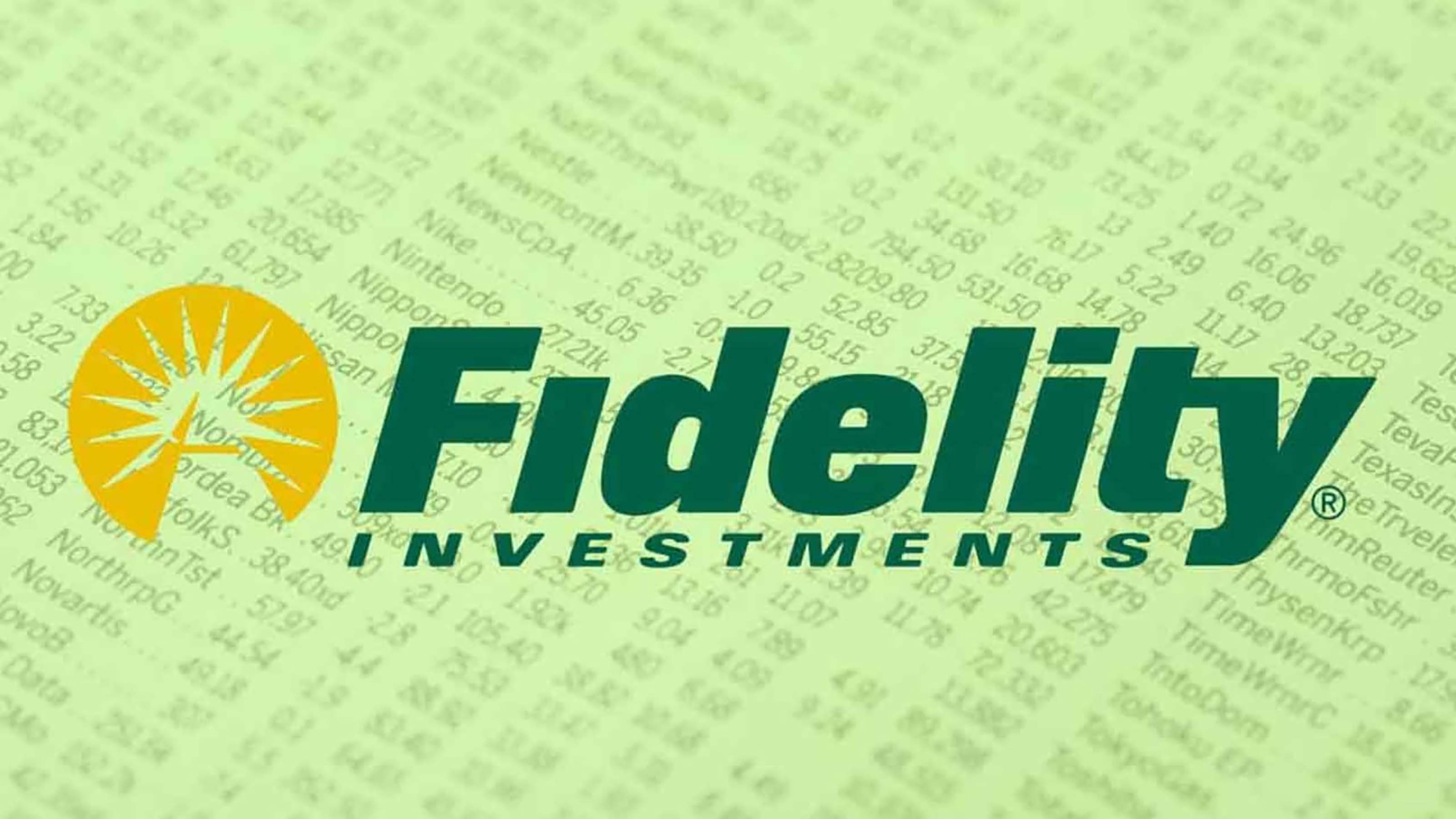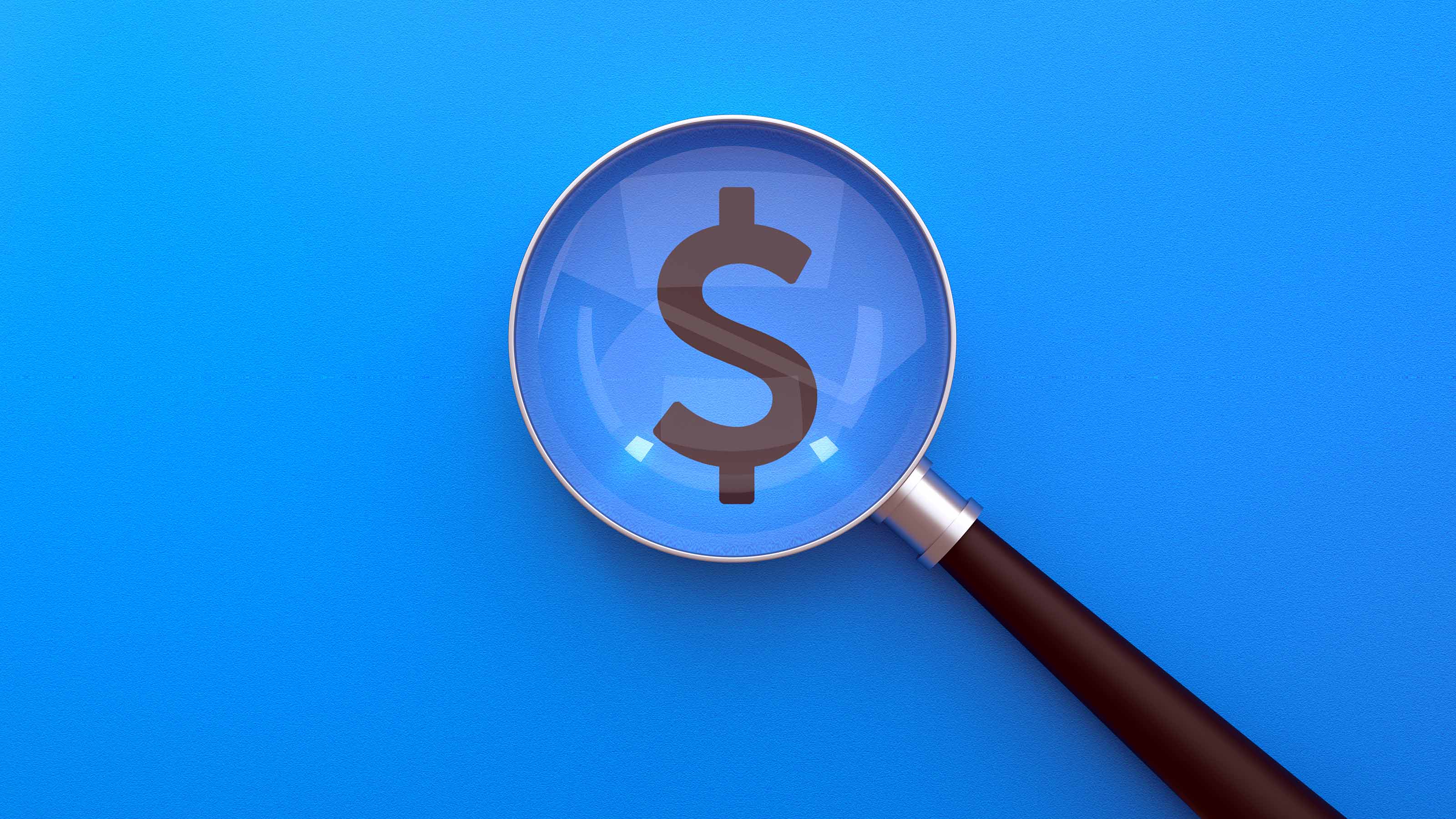The Best Fidelity Funds for 401(k) Retirement Savers
Fidelity funds are renowned for their managers' stock-picking prowess. We rate Fidelity's best actively managed funds that are popular in 401(k) plans, including its target-date solutions.


Fidelity celebrates good stock picking. The firm holds a contest every year for its portfolio managers: They get 60 seconds to pitch one idea, and the best pitch wins a dinner for four. The best performer after 12 months also wins dinner.
Maybe that's why many of the best Fidelity funds stand up so well in our annual review of the most widely held 401(k) funds.
Here, we zero in on Fidelity products that rank among the 100 most popular funds held in 401(k) plans, and rate the actively managed funds Buy, Hold or Sell. A total of 22 Fidelity funds made the list, but seven are index funds, which we don't examine closely because the decision to buy shares in one generally hinges on whether you seek exposure to a certain part of the market.
Actively managed funds are different, however. That's why we look at the seven actively managed Fidelity funds in the top-100 401(k) list. We also review seven Fidelity Freedom target-date funds as a group as they all rank among the most popular 401(k) funds. And we took a look at Fidelity Freedom Index 2030 – it has landed on the top-100 roster for the first time, and while it's index-based, active decisions are made on asset allocation.
This story is meant to help savers make good choices among the funds available in their 401(k) plan. It is written with that perspective in mind. Look for our reviews of other big fund firms in the 401(k) world, which currently include Vanguard, T. Rowe Price and American Funds, and will soon include Buy-rated actively managed funds across all issuers.
Let's look at some of the best Fidelity funds for your 401(k) plan. We'll determine which ones stand up to scrutiny, and which ones, if any, you should avoid.
Disclaimer
Returns and data are as of Oct. 24. In each review, we refer to the symbol, returns and expense ratio of the share class that is available to most investors. The reason for this is that the share classes of specific funds offered in 401(k) plans can vary, depending in part on the size of the plan.

Fidelity Balanced: BUY
- Symbol: FBALX
- Expense ratio: 0.52%
- 1-year return: 25.7%
- 3-year annualized return: 18.1%
- 5-year annualized return: 14.8%
- 10-year annualized return: 12.3%
- Rank among the top 401(k) funds: #59
- Best for: Investors who want an all-in-one, stock-and-bond portfolio
Funds that hold stocks and bonds, otherwise known as balanced funds, are typically considered moderate all-in-one funds. But Fidelity Balanced is a little turbocharged. It typically holds an above-average stake in stocks compared with the peer group, funds that allocate 50% to 70% of assets to stocks.
At last report, FBALX held 72% of its assets in stocks – nearly 10 percentage points more than the typical balanced fund. On the bond side, the fund is a bit more staid than others, generally speaking. Investment-grade securities, rated between triple-A and triple-B, fill most of the bond portfolio – more than the typical balanced fund holds in high-grade bonds – and represent 23% of the entire portfolio. Junk-rated or below bonds make up just 1% of the fund's assets.
This Fidelity fund has a unique setup. Über-manager Robert Stansky makes the big-picture decisions of how much of the portfolio should own in stocks and in bonds. Eight stock pickers and four bond pickers, who specialize in specific sectors, do the specific security selection. U.S. government bonds dominate the bond portfolio. The usual suspects – including Microsoft (MSFT), Apple (AAPL), Amazon.com (AMZN) and Alphabet (GOOGL) – top the stock side.
Balanced funds are good choices for investors who want a no-fuss, all-in-one fund. But this one is more aggressive than others. That means more volatility in down markets. In the 2007-09 bear market, for instance, Fidelity Balanced sank a cumulative 43.5%, which was more than the typical 40.8% drop in the typical balanced fund. (For context, the S&P 500 lost a cumulative 55.3%.) And in the pandemic bear market in early 2020, Fidelity Balanced lost 26.7%, exceeding the 24.2% loss in the typical balanced fund (the S&P 500 lost 33.8%). Bear that in mind when you invest.
But overall, FBALX remains among the best Fidelity funds. The portfolio positioning has helped Fidelity Balanced deliver a 10-year annualized return that beats 98% of its peers. It also results in a yield of about 0.9% at present.

Fidelity Blue Chip Growth: BUY
- Symbol: FBGRX
- Expense ratio: 0.79%
- 1-year return: 36.8%
- 3-year annualized return: 33.6%
- 5-year annualized return: 28.8%
- 10-year annualized return: 21.8%
- Rank among the top 401(k) funds: #63
- Best for: Aggressive investors who want to invest in fast-growing, innovative companies
Fidelity Blue Chip Growth is a member of the Kiplinger 25, the list of our favorite actively managed no-load funds, and is among the best-performing Fidelity funds you can find. Manager Sonu Kalra has run FBGRX for more than a decade, earning a 21.8% annualized 10-year return that outpaces 96% of all large-company growth funds and the S&P 500.
"What we're trying to do with this fund is identify companies where the market is mispricing not just the absolute rate of growth but the durability of that growth," he says. "We do that by trying to identify companies that are participating in large underpenetrated markets."
Kalra divides the portfolio into three buckets:
Secular growers, he says, are businesses that are benefiting from growing trends such as e-commerce, cloud technology, electric vehicles.
Cyclical growers include companies that are in the sweet spot of the business cycle – home builders, for instance, benefiting from the move out of the city during COVID 19, or energy companies on the rebound after the pandemic shut-down.
Kalra calls the last bucket "opportunistic growers." It includes companies that have a catalyst to drive growth going forward – a new manager or a new product. American Eagle Outfitters (AEO), for instance, is a retailer with a brand of intimate wear that's growing rapidly and an online business that's thriving.
FBGRX holds stocks in more than 500 companies, at last count. But the portfolio is top-loaded. For instance, the largest 10 holdings make up nearly half of the fund's assets. Companies below the 20th biggest holding represent stakes of less than 1% each of the fund's assets.
Kalra, who credits a team of 100-odd analysts with helping him to do his job (they're his "eyes, ears and feet on the street"), has positioned Fidelity Blue Chip Growth for an economic rebound, with a tilt toward cyclical stocks. In mid-2021, he added to stakes in Airbnb (ABNB) after shares pulled back and in Tesla (TSLA), which he says will see an increase in demand for its vehicles once the supply-demand dynamic improves across the auto industry.
Investors looking for an actively managed fund that can beat the S&P 500 haven't been disappointed in the 12 years that Kalra has been running the fund. We don't expect that to change.

Fidelity Contrafund: BUY
- Symbol: FCNTX
- Expense ratio: 0.86%
- 1-year return: 28.4%
- 3-year annualized return: 23.5%
- 5-year annualized return: 21.9%
- 10-year annualized return: 17.6%
- Rank among the top 401(k) funds: #6
- Best for: Moderate investors looking for a tamer growth fund
Will Danoff has presided over Fidelity Contrafund since September 1990. Since then, Contrafund has returned 14.2%, well ahead of the 11.2% annualized return in the S&P 500. A $10,000 investment on the day Danoff took over would be worth more than $620,000 today. A comparable investment in a low-cost S&P 500 index fund would be worth $262,253, nearly 60% less.
In other words, Contrafund is a proven standout.
Danoff prefers to buy beaten-down or overlooked best-in-class companies with superior earnings growth, proven management teams and sustainable competitive advantages. These days, he's bullish on tech – well, he has been for years, but he is particularly keen on the space now as digital transformation stories continue apace. More than 30% of the fund is invested in technology, at last report, which is a touch above the 28% weighting in the S&P 500 stock index. He has owned Amazon.com, a top holding, since 2007, and Apple, another top fund holding, since 2003.
Watchers of Fidelity funds consider Contrafund a conservative choice for growth. There's some merit to that. Over the past five years, for instance, the fund's 21.7% annualized return ranks in the 50th percentile of its peer group: funds that invest in growing, large companies. But FCNTX has been less volatile over that period than the typical large-company growth fund, too.
This is one of the best Fidelity funds for investors who want growth but not all the volatility that comes with a more aggressive fund.

Fidelity Diversified International: BUY
- Symbol: FDIVX
- Expense ratio: 1.05%
- 1-year return: 23.9%
- 3-year annualized return: 17.4%
- 5-year annualized return: 12.6%
- 10-year annualized return: 10.0%
- Rank among the top 401(k) funds: #74
- Best for: Foreign stock exposure
It's hard to muster up excitement about investing overseas, because U.S. stocks have done so much better than foreign shares.
As foreign-stock funds go, Fidelity Diversified International, which invests mostly in large companies with durable or improving growth prospects, is a solid choice. In fact, this Fidelity fund has beaten the index – the MSCI EAFE, which tracks foreign stocks in developed countries – over eight of the past 11 full calendar years.
William Bower has run FDIVX for more than 20 years. He favors high-quality businesses with competitive advantages and consistent profitability. The fund's top country exposures include Japan, France and the U.K. But its investments aren't limited to developed countries. In fact, 10% of the fund is invested in emerging markets, mostly in Asia. Its top holdings are ASML Holding (ASML), a maker of photolithography systems used to make semiconductor chips, pharmaceutical firm Roche Holding and luxury goods maker LVMH Moet Hennessy Louis Vuitton (LVMUY).
In years past, we have rated Fidelity Diversified International a Hold because next to its peers – funds that invest in large, growing foreign stocks – it's decidedly mediocre. Fidelity Diversified International has lagged the typical foreign large growth fund in five of the past 10 years.
There are certainly better actively managed funds out there, but those funds might not be available to you in our plan. In this review, we have to consider that this might be the only active foreign fund available in the plan.
In that context, this foreign-stock fund is a fine choice. Over time, FDIVX has beaten the MSCI EAFE index, and it has been less volatile, too.

Fidelity Growth Company: BUY
- Symbol: FDGRX
- Expense ratio: 0.83%
- 1-year return: 35.7%
- 3-year annualized return: 35.2%
- 5-year annualized return: 30.6%
- 10-year annualized return: 22.7%
- Rank among the top 401(k) funds: #26
- Best for: Aggressive investors looking for to generate wealth
Fidelity Growth Company is Fidelity's best large-company growth fund. Over the past decade, manager Steven Wymer has delivered a 22.7% annualized total return to shareholders, which trounces the 16.2% gain in the S&P 500. Only a dozen or so funds have done better than that over the past 10 years.
Many investors are shut out to Fidelity Growth Company now because it's closed to new investors. But if your 401(k) plan includes FDGRX as an investment option, you can still invest in it, even if you're new to the fund.
Wymer holds close to 500 stocks in the fund, with a heavy tilt toward information technology companies, such as Nvidia (NVDA), Salesforce.com (CRM) and Shopify (SHOP), as well as communications services firms, such as Google parent Alphabet, social media firm Facebook, and Roku (ROKU), the streaming-device company.
Economically sensitive stocks have recently given back some of their leadership to secular growth stocks, Wymer says in a recent report. "The outperformance of a stock or sector in the months ahead will be driven more by individual fundamentals than macro factors or trends," he says. That's why he's focused on companies with a strong outlook based on fundamentals.
FDGRX is one of the best Fidelity funds on offer, generating significant wealth in the past over time. If you're lucky enough to have access to it in your 401(k) plan, buy shares.

Fidelity Low-Priced Stock: BUY
- Symbol: FLPSX
- Expense ratio: 0.78%
- 1-year return: 38.5%
- 3-year annualized return: 15.3%
- 5-year annualized return: 13.6%
- 10-year annualized return: 12.9%
- Rank among the top 401(k) funds: #77
- Best for: Investors looking for a solid value-oriented fund
Joel Tillinghast was a Fidelity analyst covering tobacco and personal-care-product firms when he came up with a concept for a new fund more than 30 years ago. The idea was to find good values in high-quality small companies and out-of-favor larger firms.
Fidelity higher-ups loved it. So in late 1989, Fidelity Low-Priced Stock launched.
FLPSX has been an unequivocal success since then, with Tillinghast at the helm, returning 13.6% annualized since inception – well ahead of the average annual gain in the S&P 500, the Russell 2000 small-company index, the Russell mid-cap benchmark and nearly all small- or midsize-company stock funds. Morningstar recently named Tillinghast its outstanding portfolio manager of 2021.
Some things have changed over the years. Tillinghast now has five comanagers, though he still runs about 95% of fund's assets. In the fund's early days, stocks had to be $15 or less at the time of purchase. A few years ago, the threshold jumped to $35, or the stock has to boast an earnings yield that falls at or above the median for the small-company Russell 2000 index, which is still the fund's benchmark. Low-Priced Stock also owns more foreign stocks than it did in its earliest days. At last report, 35% of assets were invested in international shares, mostly in Europe and Japan.
Finally, FLPSX was always focused on companies of all sizes, but early on, it tilted heavily toward small firms. Now, the fund is evenly split among large-, midsize- and small-company stocks.
But Tillinghast and his comanagers still look for companies with sturdy profits, little debt and a sustainable competitive edge over peers. He's not "stingy," says Morningstar analyst Robby Greengold, and he doesn't "chase fads." Among the fund's top holdings are UnitedHealth Group (UNH), British clothing footwear and home products retailer Next, and Metro, a Canadian grocery store chain.
FLPSX is one of the best Fidelity funds if you're looking for a great core holding – it's well diversified among sectors and globally. And it boasts low volatility relative to most stock funds. The only concern is that Tillinghast, who is 63 years old, plans to retire from investing at the end of 2023.

Fidelity Puritan: BUY
- Symbol: FPURX
- Expense ratio: 0.52%
- 1-year return: 22.4%
- 3-year annualized return: 16.4%
- 5-year annualized return: 14.1%
- 10-year annualized return: 8.9%
- Rank among the top 401(k) funds: #84
- Best for: Moderate investors who want an all-in-one stock-and-bond fund
Manager Daniel Kelley took over Fidelity Puritan in mid-2018, but he appears to be finding his way. That's why we're upgrading this fund from Hold to Buy. Since he assumed his position, the fund has returned 14.5% annualized, which outpaces the fund's benchmark, a 60/40 blend of the S&P 500 index and Bloomberg U.S. Aggregate Bond index. That beats the 10.0% annualized return in the typical balanced fund, too.
On the stock side, Kelley relies on fundamental and quantitative analysis to build the portfolio. He favors companies that offer earnings and revenue growth at a reasonable price. FPURX currently has a high stake at 70% of assets. On the bond side, which includes a roughly 5% stake in high-yield bonds, the goal is to find attractively priced bonds with a disciplined eye on risk management.
Lately, Kelley has loaded up on retail stocks that might benefit from pent-up demand from consumers as well as financials, which stand to gain from improved loan demand as the economy reopens. A rise in interest rates, if it happens, would be a bonus for banks, too. Bank of America (BAC) and Wells Fargo (WFC) were top bank holdings at last report.
On the bond side, rising inflation and interest rates are a concern. (Bond prices and interest rates move in opposite directions.) So Puritan is currently tilting toward investment-grade corporate bonds, especially those issued by financials, given the banks' strong balance sheets and attractive valuations.
Fidelity Puritan is best for moderate investors who want an all-in-one portfolio solution for stocks and bonds. Under Kelley, who has run the fund for just over three years, Puritan has turned in above-average returns with below-average volatility.

Fidelity Freedom Index 2030: BUY
- Symbol: FXIFX
- Expense ratio: 0.12%
- 1-year return: 18.8%
- 3-year annualized return: 13.4%
- 5-year annualized return: 11.8%
- 10-year annualized return: 9.7%
- Rank among the top 401(k) funds: #100
- Best for: Investors who want a low-cost blend of stocks and bonds
This is the first time a Fidelity Freedom Index target-date fund has ranked among the 100 most widely held 401(k) funds.
This particular fund is designed for investors who plan to retire around the year 2030; that puts them in their mid-50s today. It holds 64% of its assets in stocks (39% in U.S. stocks and 25% in foreign shares), 35% in bonds and 1% in cash. As its name implies, it is comprised entirely of index funds (six, to be exact). Along with a total market U.S. stock fund and a total global (ex-US) stock fund, the 2030 fund also holds a bond fund that mirrors the Bloomberg U.S. Aggregate bond index, a long-term Treasury fund and an inflation-protected bond index fund.
It gets the job done, as index funds go. Over the past 10 years, the fund's annualized return, 9.7%, outpaces the typical 2030 target-date fund, which posted a 9.6% annualized return.
Because index funds make up its innards, much of Freedom Index 2030's success will hinge on how assets are allocated. Many experts believe that regardless of the strategy, asset allocation – the practice of apportioning a certain slice of a portfolio to different assets to balance risk and reward – is more important to investing successfully than security selection.
To that end, Fidelity announced in July 2021 that it would be tweaking the allocation of the Freedom Index funds, all of it to increase diversification benefits on the bond side. It's adding a slice of foreign government debt, beefing up the allocation to Treasury Inflation-Protected Securities (short-term and long-term) as well as long-term Treasuries. To make room for these changes, the series will reduce assets in investment-grade bonds and short-term debt.
"These updates seek to improve portfolio resilience in distinct market environments that may emerge, especially for investors nearing or in retirement," says a company spokesperson.
The transition will be made slowly and isn't expected to be complete until early fall 2022.

Fidelity Freedom Target-Date Series: BUY
- Rank among the top 401(k) funds: #24 (FFFEX, 2030); #28 (FFTWX, 2025); #32 (FFFFX, 2040); #33 (FFTHX, 2035); #37 (FFFDX, 2020); #57 (FFFGX, 2045); #61 (FFFHX, 2050)
- Best for: Investors who want an expert to handle their retirement savings
Seven Fidelity Freedom Funds that sport the target years 2020 to 2050 rank among the most widely held 401(k) funds. While not splashy, the Freedom series nonetheless deserve a spot among Fidelity's best funds. These funds perform well, ranking in the top quartile of their respective peer groups in most calendar years.
Fidelity Freedom 2030 is the biggest in 401(k) plans. Geared toward retirement savers with just under a decade to go before they quit working, the fund currently holds 62% of its assets in stocks (30% is in U.S. stocks; 32%, in foreign shares); and 31% is in bonds, most of which is U.S. debt. The rest sits primarily in cash.
FFFEX sports a finely tuned allocation. The portfolio holds 11 U.S. stock funds – mostly actively managed, including Fidelity Series Small Cap Opportunities (FSOPX) and Fidelity Series Opportunistic Insights (FVWSX) – and seven foreign stock funds, including an international small-company fund, a Canada fund, and two emerging-markets stock funds. All of the holdings are "Series" branded funds, which were created exclusively for the Freedom target-date funds and are not otherwise available to retail investors.
The bond portion of Freedom target-date funds are similarly finely calibrated, and includes exposure to floating-rate loans, real estate debt, foreign bonds and high-yield IOUs.
Fidelity's tweaks to its target-date fund allocation change – mentioned in our review of the Freedom Index 2030 fund – apply to all of the firm's target-date products. So the firm's actively managed Freedom Target series will also get a slice of foreign government debt, and a beefing-up of allocation to Treasury Inflation Protected Securities (short-term and long-term) and long-term Treasuries, too.
The changes will be gradual, but we're watching the series closely just in case.
Learn more about Fidelity Freedom Funds at the Fidelity provider site.
Get Kiplinger Today newsletter — free
Profit and prosper with the best of Kiplinger's advice on investing, taxes, retirement, personal finance and much more. Delivered daily. Enter your email in the box and click Sign Me Up.

Nellie joined Kiplinger in August 2011 after a seven-year stint in Hong Kong. There, she worked for the Wall Street Journal Asia, where as lifestyle editor, she launched and edited Scene Asia, an online guide to food, wine, entertainment and the arts in Asia. Prior to that, she was an editor at Weekend Journal, the Friday lifestyle section of the Wall Street Journal Asia. Kiplinger isn't Nellie's first foray into personal finance: She has also worked at SmartMoney (rising from fact-checker to senior writer), and she was a senior editor at Money.
-
 Trump’s Tax Cut Risks Your SNAP, Medicaid Benefits
Trump’s Tax Cut Risks Your SNAP, Medicaid BenefitsTax Cuts The GOP budget blueprint could slash lifesaving programs for millions of U.S. households.
By Gabriella Cruz-Martínez
-
 Can Trump Fire Powell? A Supreme Court Case Could Decide
Can Trump Fire Powell? A Supreme Court Case Could DecidePresidential posts threaten to overwhelm decades of precedent and tradition, whatever the nine justices decide.
By David Dittman
-
 What to Do With Your Tax Refund: 6 Ways to Bring Growth
What to Do With Your Tax Refund: 6 Ways to Bring GrowthUse your 2024 tax refund to boost short-term or long-term financial goals by putting it in one of these six places.
By Rachael Green
-
 What Does Medicare Not Cover? Eight Things You Should Know
What Does Medicare Not Cover? Eight Things You Should KnowHealthy Living on a Budget Medicare Part A and Part B leave gaps in your healthcare coverage. But Medicare Advantage has problems, too.
By Donna LeValley
-
 12 Great Places to Retire in the Midwest
12 Great Places to Retire in the MidwestPlaces to live Here are our retirement picks in the 12 midwestern states.
By Stacy Rapacon
-
 10 Cheapest Small Towns to Live In
10 Cheapest Small Towns to Live InThe cheapest small towns might not be for everyone, but their charms can make them the best places to live for plenty of folks.
By Dan Burrows
-
 15 Reasons You'll Regret an RV in Retirement
15 Reasons You'll Regret an RV in RetirementMaking Your Money Last Here's why you might regret an RV in retirement. RV-savvy retirees talk about the downsides of spending retirement in a motorhome, travel trailer, fifth wheel or other recreational vehicle.
By Bob Niedt
-
 The Cheapest Places To Retire in the US
The Cheapest Places To Retire in the USWhen you're trying to balance a fixed income with an enjoyable retirement, cost of living is a crucial factor to consider.
By Stacy Rapacon
-
 The Six Best Places to Retire in New England
The Six Best Places to Retire in New Englandplaces to live Thinking about a move to New England for retirement? Here are the best places to land for quality of life, affordability and other criteria.
By Stacy Rapacon
-
 13 Smart Estate Planning Moves
13 Smart Estate Planning Movesretirement Follow this estate planning checklist for you (and your heirs) to hold on to more of your hard-earned money.
By Janet Kidd Stewart
